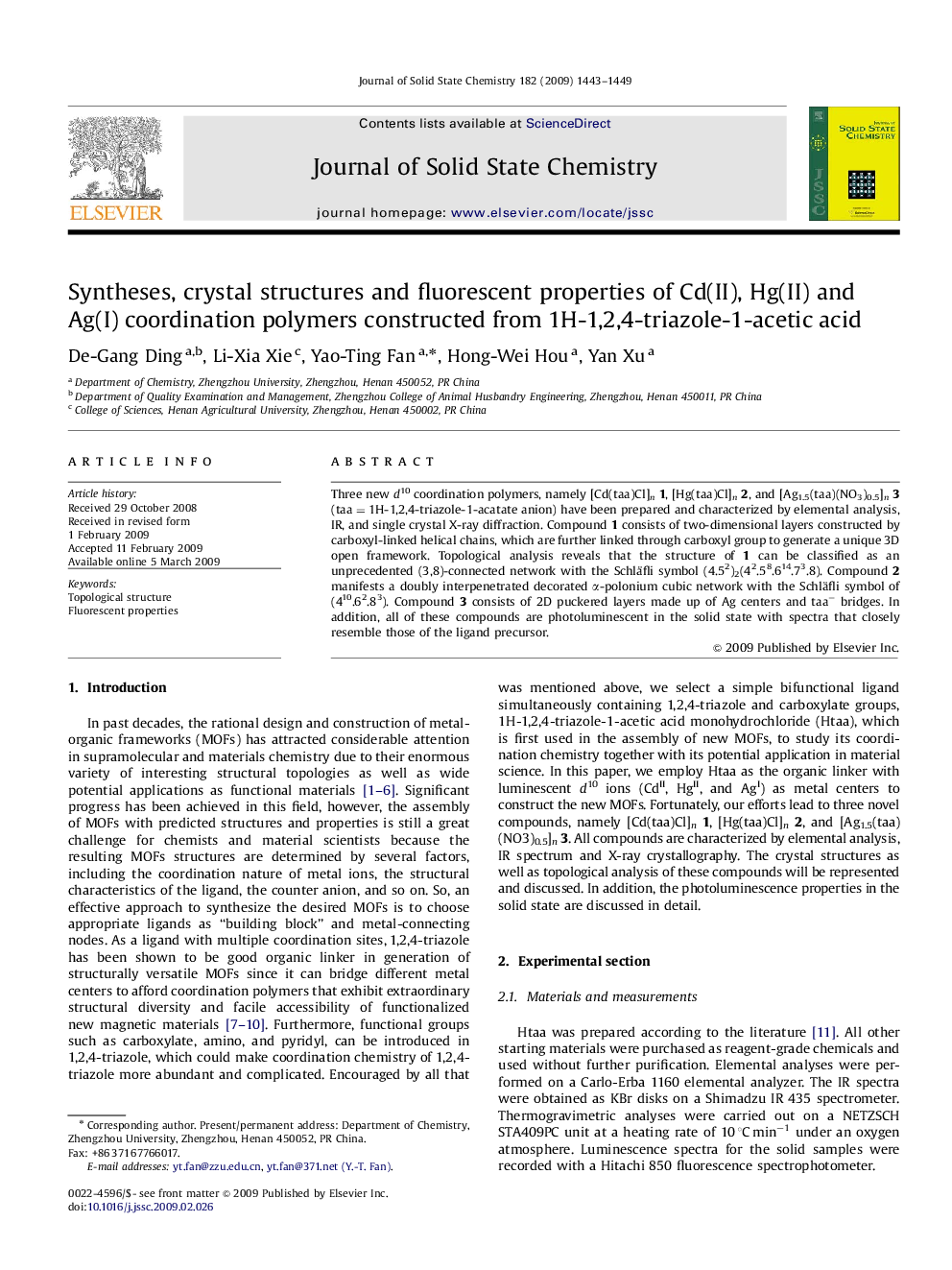| Article ID | Journal | Published Year | Pages | File Type |
|---|---|---|---|---|
| 1331826 | Journal of Solid State Chemistry | 2009 | 7 Pages |
Three new d10 coordination polymers, namely [Cd(taa)Cl]n1, [Hg(taa)Cl]n2, and [Ag1.5(taa)(NO3)0.5]n3 (taa=1H-1,2,4-triazole-1-acatate anion) have been prepared and characterized by elemental analysis, IR, and single crystal X-ray diffraction. Compound 1 consists of two-dimensional layers constructed by carboxyl-linked helical chains, which are further linked through carboxyl group to generate a unique 3D open framework. Topological analysis reveals that the structure of 1 can be classified as an unprecedented (3,8)-connected network with the Schläfli symbol (4.52)2(42.58.614.73.8). Compound 2 manifests a doubly interpenetrated decorated α-polonium cubic network with the Schläfli symbol of (410.62.83). Compound 3 consists of 2D puckered layers made up of Ag centers and taa− bridges. In addition, all of these compounds are photoluminescent in the solid state with spectra that closely resemble those of the ligand precursor.
Graphical abstractThree new compounds based on 1H-1,2,4-triazole-1-acetic acid and Cd(II), Hg(II) and Ag(I) salts display luminescent properties and may be potential candidates for luminescent materials.Figure optionsDownload full-size imageDownload as PowerPoint slide
